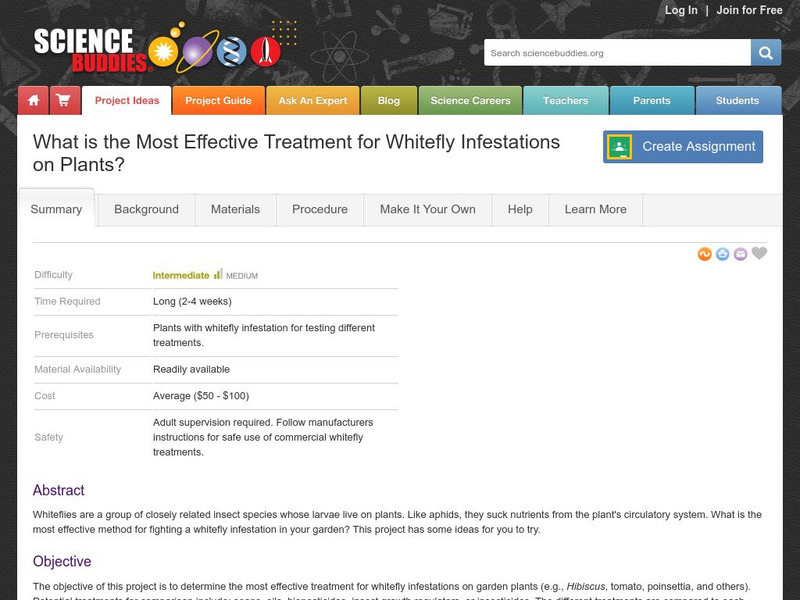Hi, what do you want to do?
Curated OER
Kids Health: Blood
This comprehensive site from Kids Health provides an indepth look at the characteristics of blood, its functions, and its importance. This site is a great starting point for understanding blood. Also includes links to similar sites.
CK-12 Foundation
Ck 12: Biology: Heart
[Free Registration/Login may be required to access all resource tools.] Describes how the heart pumps blood throughout the body.
PBS
Nova Online: Troubled Hearts
This site contains pictures of hearts that have some type of problem such as narrowing of the arteries and muscle damage from a heart attack. There is also a terrific picture of the coronary artery system that supplies the heart.
Annenberg Foundation
Annenberg Learner: Journey North: Facts About Earthworms
A comprehensive resource on earthworms, offering the following sections: "Facts about Earthworms," "Migration and Annual Cycle," and "Lessons Activities and Information."
CK-12 Foundation
Ck 12: Biology: Blood Vessels
[Free Registration/Login may be required to access all resource tools.] Discusses the different types of blood vessels and their roles.
Khan Academy
Khan Academy: Introduction to Lab Values and Normal Ranges
An explanation of lab values following a blood test using a universal model. Also discussed are reasons why a number may be outside of a normal range. These variances include: age, gender, individual laboratory techniques, and the given...
Khan Academy
Khan Academy: Units for Common Medical Lab Values
Comparing and contrasting the amount of elements and function (hormone or enzyme activity in lab values.
PBS
Pbs Nova Online: Amazing Heart Facts
This concise PBS NOVA site contains interesting facts about the heart and how it works.
PBS
Pbs Teachers: Scientific American: Body Building: One Way Valves
Investigate biotechnology design by creating a model of a one-way valve from plastic tubing. Describe the mechanical action of the valve.
CK-12 Foundation
Ck 12: Life Science: Heart
[Free Registration/Login may be required to access all resource tools.] What does the heart look like? How does it pump blood? Learn more about the heart in this learning module produced by CK-12.
Khan Academy
Khan Academy: Blood Oxygen Levels May Determine Cardiac Muscle Regeneration
Practice for the MCAT by answering questions based on the given bar graphs showing apoptosis and cytokinesis rates.
Khan Academy
Khan Academy: What Is Equivalent?
The equivalent is the amount of a substance which will either react or supply with one mole of hydrogen ions and acid-base reactions or do the same with one mole of electrons in a redox reaction.
Khan Academy
Khan Academy: What's Inside Blood?
An explanation of blood from the time it is drawn from the arm to its centrifugation to an analysis of the three components of plasma, white blood cells, and red blood cells.
Khan Academy
Khan Academy: Molarity vs. Molality
Learn how molarity and molality differ. The molality of a solution is equal to the moles of solute divided by the mass of solvent in kilograms, while the molarity of a solution is equal to the moles of solute divided by the volume of...
Khan Academy
Khan Academy: Molarity vs.osmolarity
Molarity and osmolarity are two distinct concepts. Molarity (M) is the number of moles of solute per liter of solution. The unit of molarity is the mole (mol). Osmolarity (Osm/L) is the total concentration of all solutes in the solution....
Science Buddies
Science Buddies: Most Effective Treatment for Whitefly Infestations on Plants?
Whiteflies are a group of closely related insect species whose larvae live on plants. Like aphids, they suck nutrients from the plant's circulatory system. You will be asked to find the most effective method for fighting a whitefly...
Science Museum of Minnesota
Lesson Plan: Valves and Pumps
In this interesting site, students see how valves and pumps work together to move blood through the circulatory system. Site contains related links.
Florida State University
Florida State University: Aquatic Snail Movie #1
In this short video, you will see the rippling and pulsing of a snail along with a view of the circulatory system. This site also provides background information on the aquatic snail.
PBS
Pbs Learning Media: Amazing Heart Facts
This feature from the NOVA: "Cut to the Heart" highlights facts about the heart, including its size and placement, and will help you to understand the importance of this wondrous organ in our bodies.
Other
Look d.com: Fish Circulation
This site from LookD.com provides information about bony fish circulation systems. The article is very brief, only one paragraph in length, but worth checking out on the subject.
Other
Hillfield Strathallan College: Evolution of Mammalian Circulation
An overview of the evolution of modern mamallian circulation. This is a good site since it puts the circulation found in reptiles in perspective. Compares it to systems in fish and mammals.
Middle School Science
Lesson Plan: Earthworm Dissection
In this lesson plan site, you will "Learn the external and internal anatomy of the earthworm, understand the structure and function of external and internal organs, know the digestive, circulatory, reproductive, and nervous system, and...
Regents of the University of Michigan
Animal Diversity Web: Phylum Arthropoda
This general overview of the arthropod phylum, which includes insects and arachnids, looks at such topics as body symmetry, appendages, movement, respiratory and nervous systems, and reproduction.
Curated OER
Kids Health: Tu Corazon Y Sistema Circulatorio
Read about how your heart works and learn about the different parts of the heart.
























